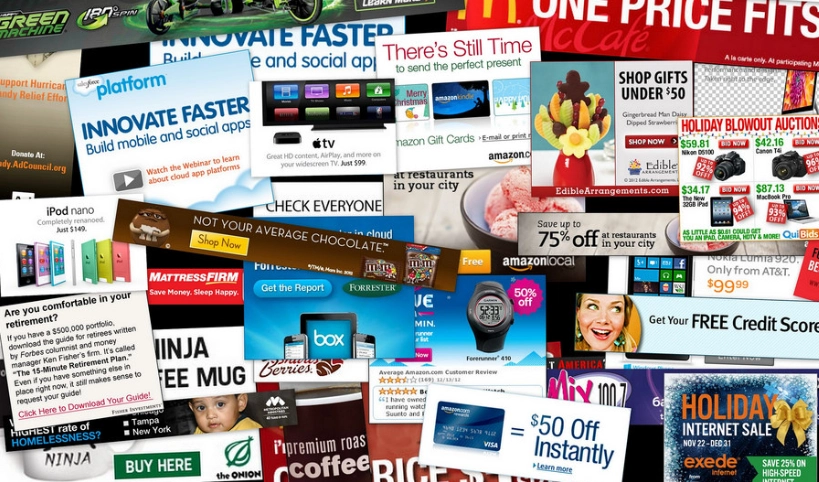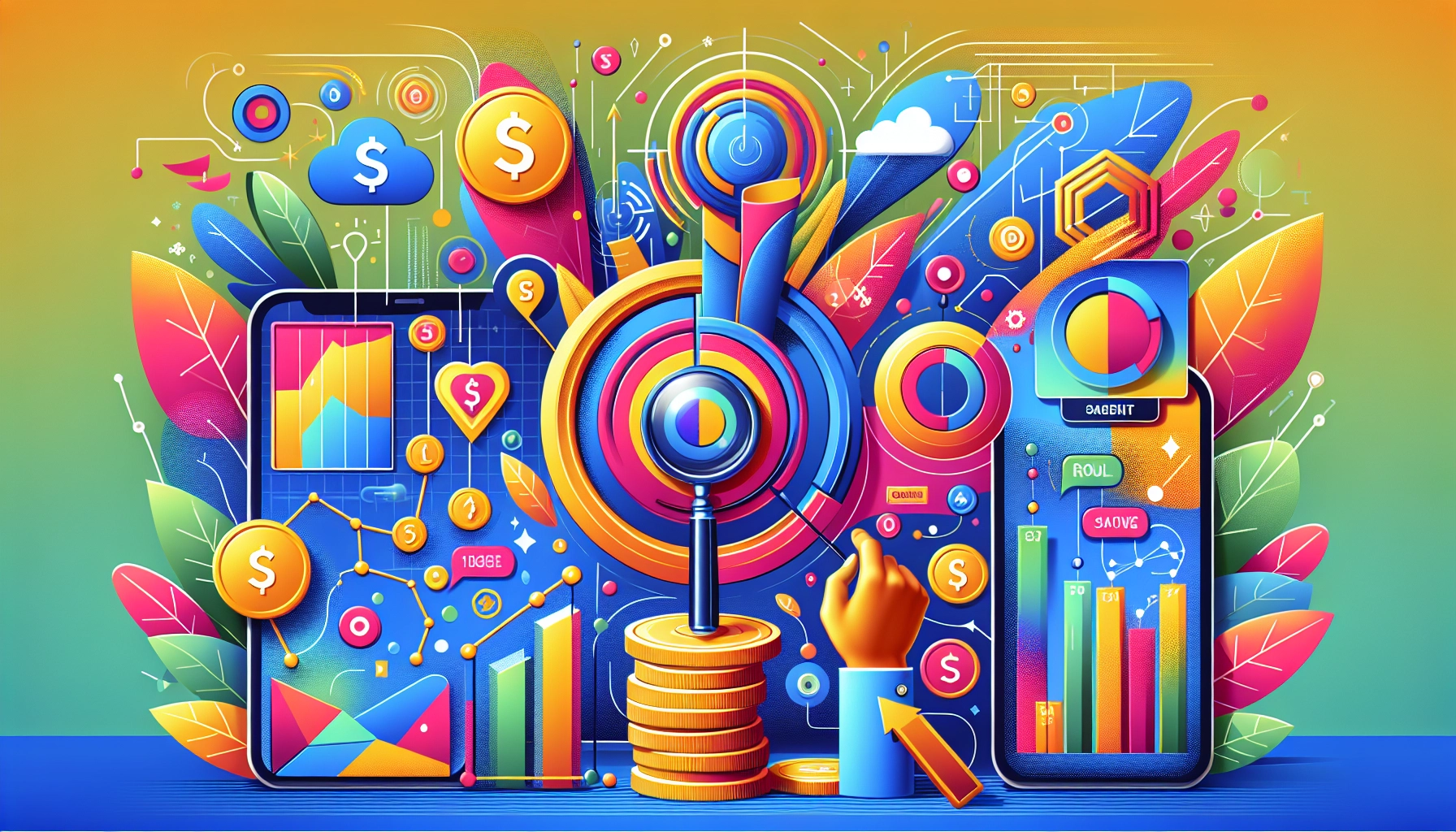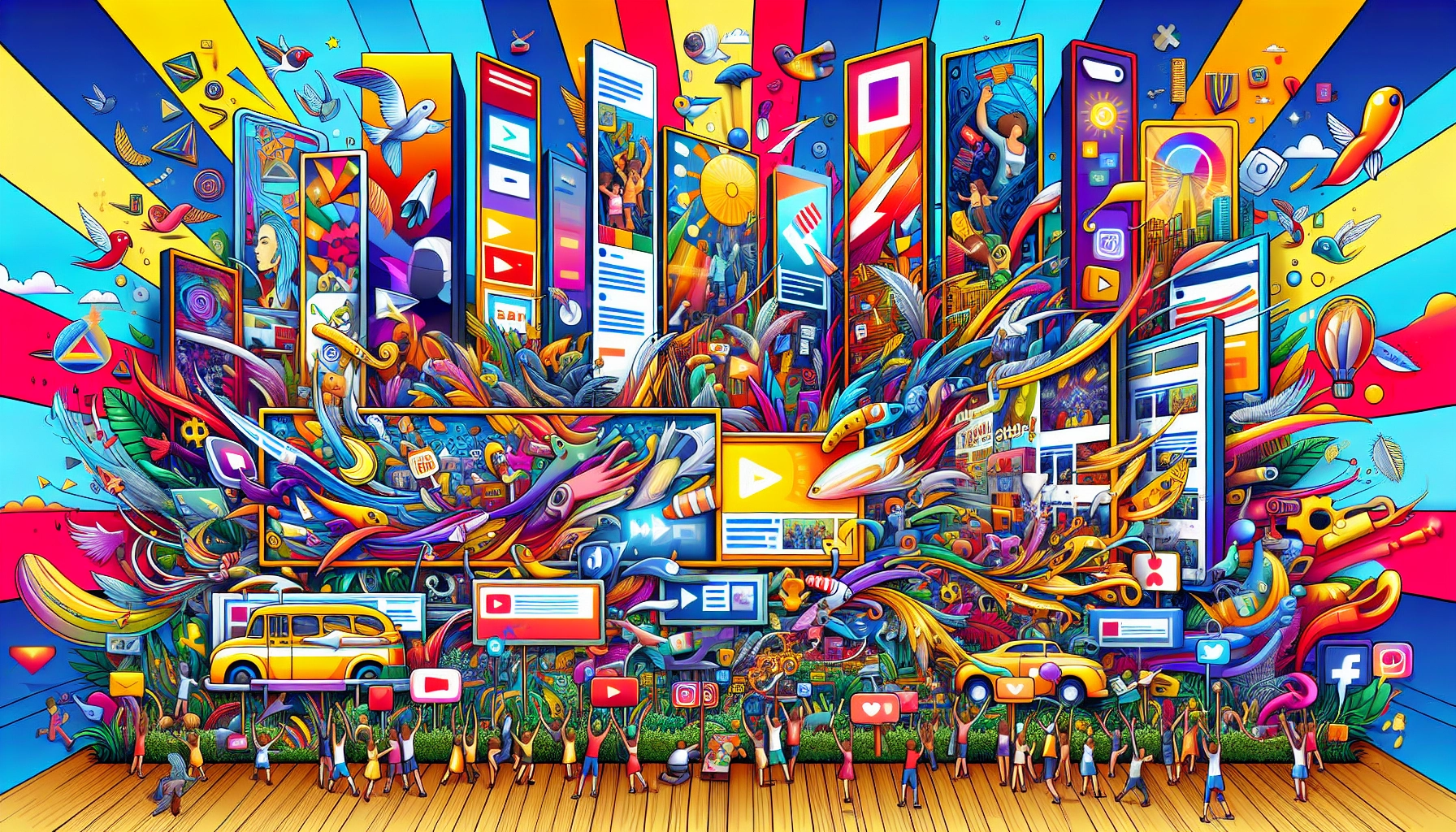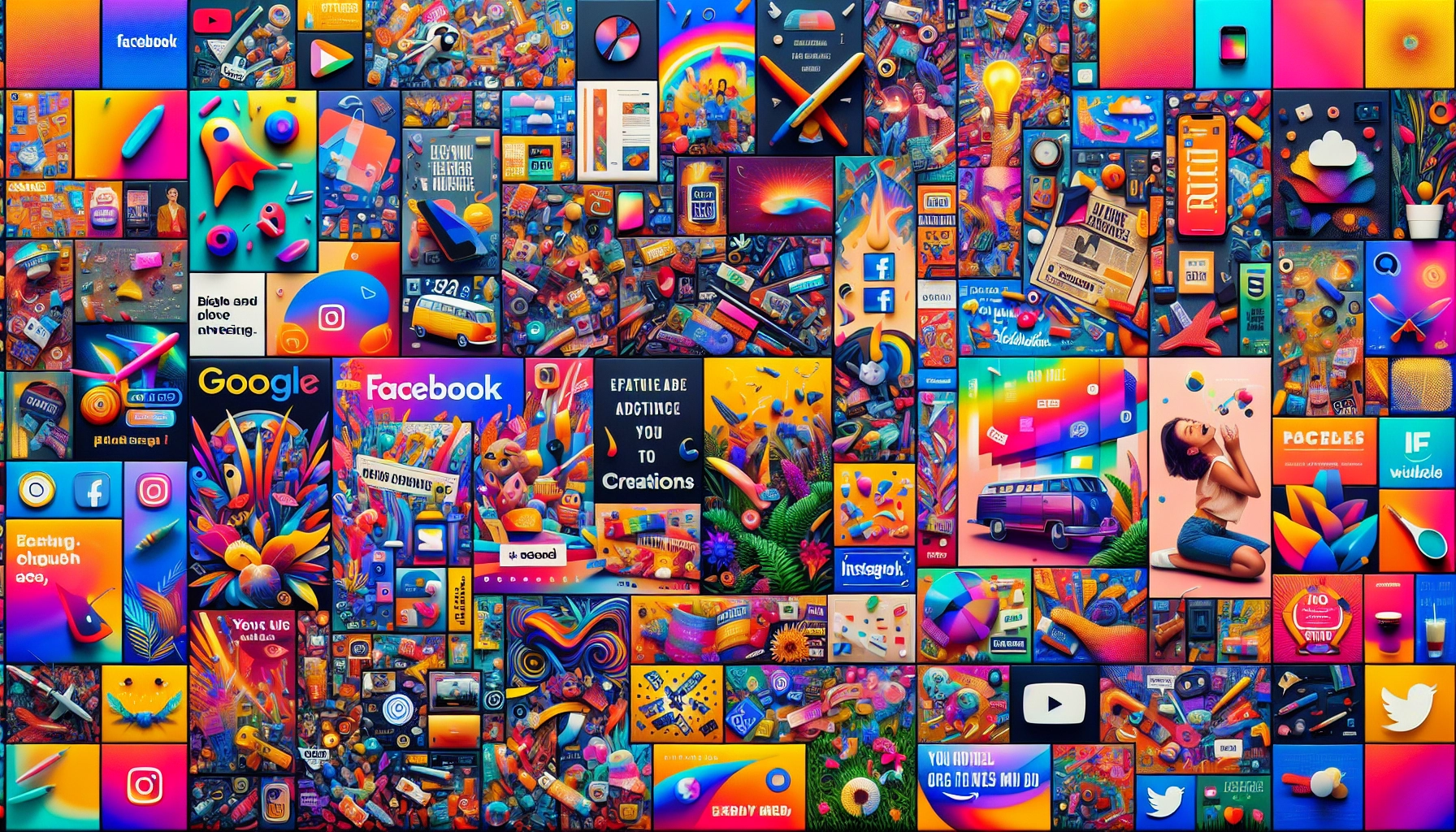Table of Contents[Hide][Show]
Digital ads help you reach your target audience online. They appear on search engines, social media, websites, and banner ads, driving brand awareness and sales. This post will cover the different types of digital ads, their benefits, and how to use them in your marketing strategy.
Key Takeaways
- Digital advertising includes search, display, video, social media, and native ads, each with benefits for engaging with audiences.
- Digital advertising offers greater targeting, measurable results, and cost-effectiveness, allowing you to optimize your ad spending and reach your desired audience more precisely.
- An excellent digital ad campaign requires clear goals, understanding of your audience, choosing the right platforms, and continuous monitoring and optimization of ad performance.
What Are Digital Ads?

Digital advertising means paying for visibility on various online platforms, including search engines, social media, and websites. These ads target audiences to drive conversions and achieve business goals such as brand awareness, customer engagement, and sales.
Digital ads are available in video, search, social media, and display forms. They appear during online browsing, streaming, and social media usage and can fit into any digital marketing strategy.
The leading digital advertising channels are search, display, social, and video, each with benefits and engagement opportunities.
Types of Digital Advertising

Digital advertising includes formats like search, social media, display, video, and native ads. Understanding these formats is critical to reaching and engaging with your target audience.
Here’s a look at the main types of digital advertising and their benefits.
Search Ads
Search ads are text-based ads on search engine results pages (SERPs) that allow you to reach active customers through specific keywords and phrases. These ads target particular search terms and appear at the top and bottom of search engine results, looking like regular search results. This makes them a great way to capture user interest and drive traffic to your site.
The ROI for search ads can be significant, with studies showing an average ROI of 200%. Paid ads get 65% of the clicks for commercial intent queries, so search ads are a powerful tool in your digital advertising strategy.
You can also boost you AD’s effectiveness by using ad extensions, targeting competitor keywords, and keyword research tools.
Display Ads
Display ads, including banner ads, are image-based ads that appear on websites and apps. They come in various shapes and sizes and are primarily used to build audience awareness. An example of display advertising is a banner ad at the top of a website’s homepage, usually embedded within or alongside website content. These ads can increase brand visibility and drive conversions, and they are a quick and cost-effective way to reach a large audience.
The Google Display Network, Bing, and Yahoo are familiar places where display ads are run. While less targeted than other forms of advertising, display ads are great for increasing brand visibility and conversions.
Video Ads
Video ads are in video format and appear on websites and apps like YouTube, TikTok, Instagram, and Facebook. On YouTube, for example, video ads play before, during, or after other content, engaging the user and promoting brand awareness.
YouTube is the second largest search engine in the world, so it’s a key platform for video ads. 88% of people have been convinced to buy after watching a brand’s video, and 70% of consumers have purchased from a brand after seeing it on YouTube. These stats show the power of video ads on consumer behavior.
Video ads can be short clips that appear before, during, or after other content. Their goals can be conversions, education, or brand awareness. Their visual and audio elements make them more engaging and often have better conversion rates than other formats.
Social Media Ads
Social media advertising involves running ads on platforms where users are active. These ads appear on platforms like Facebook, Twitter, and Instagram. Facebook is the most versatile platform for businesses to use social media advertising and allows marketers to put digital ads directly in user feeds.
Video or image ads are the recommended formats for social media as they are more engaging. Sponsored posts show up seamlessly in user feeds and increase engagement opportunities. Facebook carousel ads, for example, can have up to 10 images or videos, so they are great for showcasing multiple products.
Create relevant organic social media ads that provide value to the audience. Effective ads can be in various formats, including video or image ads. Static image ads, which are images with a call to action, are simple and familiar.
Native Ads
Native advertising is paid media placed in a natural environment that matches the content and format. Native ads are designed to match the look and feel of the platform, so they look less like traditional ads. This subtlety makes native ads more appealing and less intrusive to users.
Sponsored content in native advertising puts a brand message into high-quality articles or videos on third-party sites. These ads are displayed as sponsored posts, links, or videos on social platforms. Low-commitment actions like free trials work well. Quick quizzes also drive campaign clickers into the sales funnel with native ads.
Benefits of Digital Advertising

Digital advertising has advantages over traditional methods, such as better targeting, measurable results, and cost-effectiveness. Businesses can reach their target audience more precisely, track real-time ad performance, and optimize ad spending for better results.
Enhanced Targeting
Marketers use audience data to target messages so they reach the right users. Advertisers can target by interests, behaviors, and timing and exclude previous viewers. This is better than traditional advertising and allows for more audience segmentation.
Effective retargeting uses data from website interactions to serve personalized ads on social media. Segmenting retargeted audiences based on their previous behavior can increase ad relevance and engagement.
For example, Instagram allows brands to use user-generated ad content to tap into authenticity for better engagement.
Measurable Results
Digital advertising allows for easy tracking and monitoring of campaigns and provides insights into user interactions. Key performance metrics are clicks and conversions, which can be measured in real-time.
Conversions can be tracked through events like ebook downloads and view-through conversions when ads influence users but don’t click immediately.
Cost-Effective
Digital advertising operates on a pay-per-click or pay-per-impression model, so it’s cost-efficient. You only pay when someone takes the desired action with pay-per-click pricing. A minimum budget of a few hundred dollars allows for budget flexibility, is accessible to small businesses, and is scalable based on investment.
You can create a budget without specific requirements to decide how much to spend. Ad relevance and user experience determine ad placement, so ads are distributed fairly. However, underfunding your digital ad campaigns can limit ad frequency and optimization.
How to Create an Effective Digital Ad Campaign

Setting objectives, understanding the audience, and using multiple channels is key to an excellent digital ad campaign. Knowing your audience’s preferences and behavior is critical to creating suitable ads.
Platform-specific ad strategies can make a big difference in overall campaign performance.
Define Your Goals
Setting specific objectives is vital to measuring the success and direction of your digital advertising. Clear goals will guide your strategy and ensure campaigns align with your desired outcomes.
Setting objectives is the first step to a successful campaign, whether it’s increasing brand awareness, driving website traffic, or boosting sales.
Identify Your Target Audience
Targeting capabilities help you reach the right people for the desired actions. Audience segmentation based on demographics and behavior increases precision. Interest targeting allows you to target beyond direct product interests so ads resonate with the right people.
Turning on audience targeting means ads will reach the most likely buyers. By knowing who your target audience is, you can create more relevant and engaging ads that speak directly to their needs and preferences and get better results for your campaign.
Choose the Right Platforms
Advertising on the proper channels is key to reaching your target audience where they spend time online. Whether it’s social media, search engines, or other digital channels, your ads will be seen by the most interested people.
This will give you the best results for your ad campaigns.
Develop Compelling Graphics
Creating visually attractive and persuasive ads is key to engaging your target audience. Use short, punchy copy and high-quality images relevant to your message. Users won’t watch beyond the first 5 seconds of a video ad, so include your business name and a call to action in the first 5 seconds to grab attention.
Good Google Ads campaigns focus on ads and the landing page experience. A smooth transition from the ad to the landing page can increase conversion rates.
By creating graphics that speak to your audience, you can increase engagement and improve the results of your ad campaigns.
Monitor and Optimize
Regular analysis of campaign performance data will help you spot trends and inform future optimization. Reviewing performance regularly and making changes is key to ongoing success. A/B testing should test one variable at a time so you can measure its impact accurately.
Reviewing analytics data will help you find the best ad placements and formats. Knowing what works in your campaign will allow you to make informed decisions to optimize.
This monitoring and optimization process is key to keeping and improving your digital ad campaigns.
Best Practices for Digital Advertising
Best practices in digital advertising include engaging ad formats, clear calls to action, and interactive elements to grab attention. Following proven strategies and refining your approach will yield better results.
Let’s explore some of these best practices in more detail.
A/B Testing
A/B testing compares two ad versions to see which one performs better. This way, marketers can objectively determine which resonates more with their audience.
This is a powerful tool in digital advertising, allowing you to improve and optimize your ad campaigns based on data continually.
Leverage Retargeting
Retargeting can increase user conversion by 70%. Retargeted website visitors are 300% more likely to convert than non-retargeted visitors. With a 0.7% click-through rate, retargeting display ads will re-engage people who have previously shown interest in your business.
Retargeting allows you to serve personalized ads to users who have interacted with your website or brand, keeping you top of mind and encouraging purchase completion. This is especially good for conversions and ROI.
Utilize Analytics
Regular data analysis is key to understanding performance and results. Analyzing data will help you spot trends and insights to make informed decisions. Knowing where to improve will get you better results in the future.
Good use of analytics allows marketers to optimize campaigns based on data. Using insights from analytics will refine your strategy, improve ad performance, and get better results.
Digital Advertising Channels

Let’s explore some real-world examples of digital advertising channels that have achieved impressive outcomes for businesses.
Google Search Ads (SEM)
Google processes 99,000 searches per second. That’s a lot of opportunity for businesses through search ads and search engine marketing. By targeting specific keywords, search ads can grab user attention and direct potential customers to your business’s offerings.
Using PPC search ads will increase your online visibility, brand recognition, and customer engagement.
Facebook Carousel Ads
A Facebook carousel ad allows users to swipe through multiple images and engage with the content by swiping through different products. An example of a Facebook carousel ad from New Look shows new products with images and text, grabbing user attention and driving engagement.
YouTube Ads
YouTube ads appear before, after, or in the middle of a video, designed to grab viewer attention and brand awareness. Where you place your ad will impact viewer engagement and retention.
Good YouTube ads build brand awareness by reaching viewers during content, making them an excellent tool for digital advertising.
Instagram Stories and Timeline Ads
Instagram ads can appear in Stories or users’ timelines, giving them multiple opportunities to grab attention. These ads are designed to appear within a user’s feed or stories, so ad formats fit into the user experience.
Visual ads are vital for users to interact and engage with the brand or product.
Influencer Partnership Ad
Partnering with social media influencers with some affiliate marketing campaigns will give you more brand credibility and reach, as they trust their audience. For example, Cristiano Ronaldo promotes Herbalife, which is good influencer marketing.
Businesses prefer to work with influencers who charge by the post engagement, so you get a clear view of the influencer’s audience and performance-based marketing.
Summary
Digital advertising has many formats and ways to reach and engage your audience. Each type of digital advertising has benefits and opportunities for your business, from search ads to social media ads. Now you know the different formats and what they can do for you.
To get the most out of your digital ad campaigns, you must set clear goals, know your audience, choose the right platforms, create great creatives, and continually monitor and optimize. Follow best practices and use examples of what works, and you’ll get better results and achieve your desired outcome in the digital world.
Frequently Asked Questions
What are the primary types of digital advertising?
The main types of digital advertising are search, display, video, social media, and native ads. Each has its own benefits for engaging with your audience. Knowing these will help you develop a complete digital marketing strategy.
How can I enhance the effectiveness of my search ads?
Ad extensions, targeting competitor keywords, and competitor keyword research tools can help you get more from your search ads. These will increase ad visibility and engagement.
Why are video ads particularly effective?
Video ads are good because they engage through sight and sound, with higher conversion rates than digital ads. They’re on platforms like YouTube and Facebook so that you can use multiple advertising strategies.
What is the benefit of using social media ads?
Using social media ads will increase engagement and conversions by targeting users where they are most active. This targeted approach uses multiple ad formats on Facebook and Instagram to achieve more impact.
How does retargeting improve conversion rates?
Retargeting will increase conversions by showing ads to users who have previously visited your site, keeping your brand at the top of their minds, and getting them to complete the purchase. This targeted approach will get you more conversions.
 Mastering Local Search Engine Optimization: Tips & Strategies for 2025
Mastering Local Search Engine Optimization: Tips & Strategies for 2025